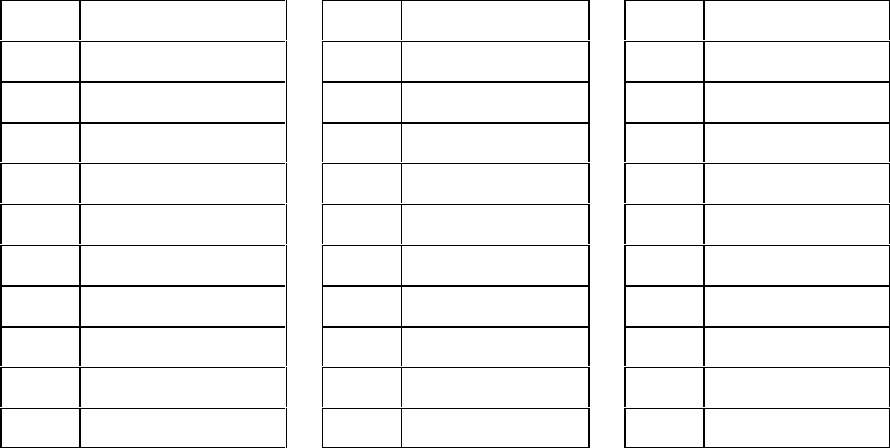
P300H P300 Series Modem Installation and Operating Handbook Page 144
8.4 CHOOSING OPTIMUM CUSTOM VALUES OF RS N&K
Complete variable code rate Reed-Solomon is available if both the INTELSAT Reed-Solomon and `Custom
Features` features are both available. Note that there is nothing magic about the INTELSAT values,
except that they were approved by INTELSAT ! They were chosen because one modem manufacturer
could not generate clocks which were not a multiple of 8kHz, and these non-optimum values make the
satellite clock an 8kHz step.
Where maximum error correction capability is required chose `t` as high as possible (eg 10), and choose
`n` as low as possible (eg 60) to maximise the number of bytes than can be corrected per codeword without
adding too much overhead. In this extreme example it can correct one byte in six (t/n), but the overhead is
50% (overhead n/k, and k = n - 2t, so k = 40, gives overhead = 60/40). Optimum values may in certain
applications mean minimum delay (particularly at low data rates), and the final paragraph of this section
deals with this aspect.
Due to the synchronisation method used for the interleaver & de-interleaver (INTELSAT specified), on 2
codewords (blocks of `n` data bytes) out of 16 the error correction capability is slightly reduced by the
equivalent of `t`=1. It is therefore best to avoid choosing a very low value of `t` so this intermittent reduction
in error correcting capability is minimised. Note that in theory error correction codes (100,90,5) and
(200,180,10) are equivalent (they can correct 5 bytes in 100 and 10 in 200 respectively), but the effect of
the interleaver synchronisation words will be more noticeable (equivalent to a loss of `t`=1) when `t`=5 (20%
loss) as opposed to `t`=10 (10% loss).
On the negative side the longer the codeword, the proportionally higher the delay through the encoder /
decoder and interleaver / deinterleaver. The delay of the combined encoder and decoder is approximately
8 x (2 x `n` - `k` + 60) bits, and the interleaver & deinterleaver a further (8 x `n` x depth) bits (if calculating
the delay, use the data rate inc framing and Reed-Solomon). INTELSAT recommend an interleaving depth
of 4 for rates less than 1544kbps, and 8 for rates of 1544kbps and above.
Practical values for Reed-Solomon code rate will depend on the amount of overhead the circuit can
tolerate. For overheads between 1.6% and 30% the table below gives practical values of (n,k,t) with the
error correction at its maximum.
% o/h Optimum (n,k,t) % o/h Optimum (n,k,t) % o/h Optimum (n,k,t)
1.6% (254,250,2) 11% (202,182,10) 21% (115,95,10)
2% (204,200,2) 12% (187,167,10) 22% (111,91,10)
3% (206,200,3) 13% (174,154,10) 23% (107,87,10)
4% (208,200,4) 14% (163,143,10) 24% (103,83,10)
5% (210,200,5) 15% (153,133,10) 25% (100,80,10)
6% (247,233,7) 16% (145,125,10) 26% (97,77,10)
7% (245,229,8) 17% (138,118,10) 27% (94,74,10)
8% (243,225,9) 18% (131,111,10) 28% (91,71,10)
9% (242,222,10) 19% (125,105,10) 29% (89,69,10)
10% (220,200,10) 20% (120,100,10) 30% (87,67,10)
For other values of overhead (o/h expressed as 1.xx), maximise `t` then:
n = Round( (2 x o/h x t) / (o/h - 1) )
k = n - 2t
If `n` is greater than 255, reduce `t`.


















